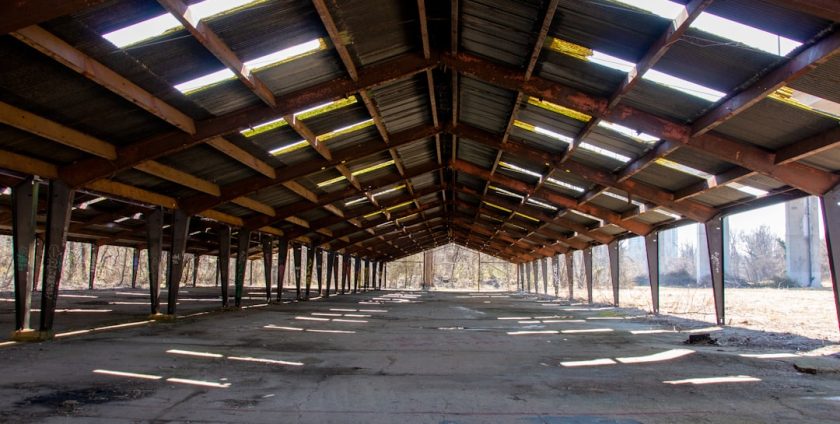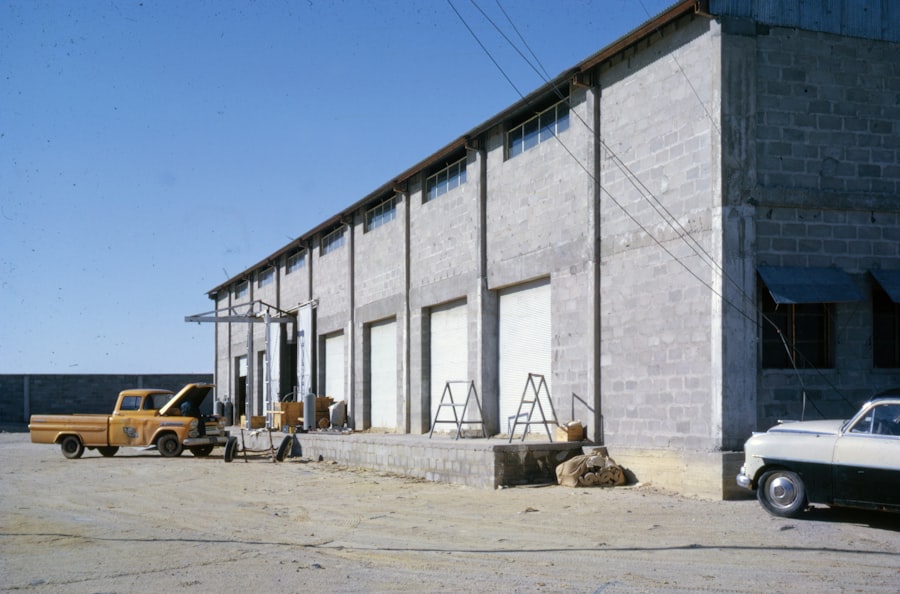
- By: admin
- Category: Commercial Floor Cleaning Machines
- 0 comment
In the bustling world of warehousing, dust control is often an overlooked yet critical aspect of maintaining a safe and efficient working environment. Dust accumulation can lead to a myriad of issues, from health hazards for employees to potential damage to inventory. For contract cleaners, building managers, and facility managers, understanding the importance of effective dust control is paramount.
Not only does it contribute to a healthier workplace, but it also enhances operational efficiency and protects valuable assets. The significance of dust control extends beyond mere aesthetics; it plays a vital role in compliance with health and safety regulations. In Australia, the Safe Work Australia guidelines emphasise the need for maintaining a clean and safe work environment.
By prioritising dust control, businesses can mitigate risks associated with respiratory issues and other health concerns, ultimately fostering a culture of safety and well-being among staff. This proactive approach not only safeguards employees but also enhances productivity, as a clean environment allows for smoother operations and fewer disruptions. Please feel free to get in touch with us through our Contact Us page for any inquiries or assistance.
Summary
- Effective warehouse dust control is crucial for maintaining a safe and healthy working environment.
- Common sources of dust in warehouses include forklifts, packaging materials, and product movement.
- Dust can have a negative impact on inventory quality, staff health, and equipment maintenance.
- Strategies for effective warehouse dust control include regular cleaning, proper ventilation, and the use of dust control equipment.
- Choosing the right dust control equipment is essential for addressing specific dust sources and maintaining air quality.
Common Sources of Dust in Warehouses
Understanding the sources of dust within a warehouse is the first step towards effective control. Warehouses are often bustling hubs of activity, with goods being received, stored, and dispatched on a daily basis. Common sources of dust include the movement of materials, packaging waste, and even the building structure itself.
For instance, when pallets are moved or stacked, they can dislodge particles from the floor or shelves, creating airborne dust that settles on surfaces and products. Another significant contributor to dust is the type of materials stored within the warehouse. For example, warehouses that handle bulk materials such as grains or powders are particularly susceptible to dust generation.
Additionally, construction or renovation activities can introduce substantial amounts of dust into the environment. Recognising these sources allows facility managers to implement targeted strategies for dust control, ensuring that both staff and inventory remain protected from the adverse effects of dust accumulation.
The Impact of Dust on Inventory and Staff

The implications of dust in a warehouse setting are far-reaching, affecting both inventory integrity and employee health. Dust can settle on products, leading to contamination or damage that may compromise quality. For instance, in a food storage warehouse, even minimal dust can pose significant health risks if it contaminates consumables.
Similarly, in warehouses dealing with electronics or sensitive equipment, dust can interfere with functionality and lead to costly repairs or replacements. From a health perspective, prolonged exposure to dust can result in respiratory issues for staff, including asthma and other chronic conditions. This not only affects employee well-being but can also lead to increased absenteeism and reduced productivity.
Furthermore, the presence of dust can create an unprofessional image for the business, potentially impacting client relationships and overall reputation. Therefore, addressing dust control is not merely a matter of cleanliness; it is essential for safeguarding both inventory and the workforce.
Strategies for Effective Warehouse Dust Control
Implementing effective dust control strategies requires a multifaceted approach tailored to the specific needs of the warehouse environment. One fundamental strategy is regular cleaning schedules that incorporate both dry and wet cleaning methods. For instance, using industrial vacuum cleaners equipped with HEPA filters can effectively capture fine particles without redistributing them into the air.
Additionally, employing damp mopping techniques can help to minimise airborne dust during cleaning processes. Another effective strategy involves optimising warehouse layout and storage practices. By ensuring that goods are stored in a manner that minimises movement and disturbance, facility managers can significantly reduce dust generation.
For example, utilising closed storage systems or containers can help contain dust within specific areas. Furthermore, implementing air filtration systems can enhance air quality by capturing airborne particles before they settle on surfaces or products.
Choosing the Right Dust Control Equipment
Selecting appropriate dust control equipment is crucial for maintaining an effective cleaning regime in warehouses. The market offers a variety of options tailored to different environments and needs. For instance, industrial vacuum cleaners with specialised attachments can be invaluable for reaching tight spaces and high shelves where dust tends to accumulate.
Additionally, considering equipment with adjustable suction power allows for versatility across various surfaces and materials. Moreover, investing in air scrubbers or filtration systems can significantly improve indoor air quality by removing airborne contaminants. These systems are particularly beneficial in warehouses with high levels of dust generation or where sensitive products are stored.
When choosing equipment, it is essential to consider factors such as the size of the warehouse, the types of materials handled, and the specific dust control challenges faced. A well-informed selection process will ensure that the chosen equipment effectively addresses the unique needs of the facility.
Implementing a Dust Control Plan

A comprehensive dust control plan is essential for ensuring long-term effectiveness in managing dust within a warehouse environment. This plan should outline specific goals, responsibilities, and procedures tailored to the unique characteristics of the facility. For instance, it may include regular assessments of dust levels in various areas of the warehouse and establish protocols for immediate action when thresholds are exceeded.
In addition to outlining cleaning schedules and equipment usage, the plan should also incorporate contingency measures for unexpected situations such as construction activities or product recalls that may generate additional dust. By proactively addressing potential challenges, facility managers can ensure that their dust control measures remain robust and effective over time. Regular reviews and updates to the plan will also help adapt to changing conditions within the warehouse.
Training Staff on Dust Control Measures
An effective dust control strategy cannot succeed without proper training for all staff members involved in warehouse operations. Training should encompass not only cleaning procedures but also the importance of maintaining a clean environment for health and safety reasons. For example, staff should be educated on how to identify potential sources of dust and understand their role in minimising its impact.
Moreover, training sessions should include practical demonstrations on using dust control equipment effectively. This hands-on approach ensures that employees feel confident in their ability to implement dust control measures consistently. Regular refresher courses can also help reinforce best practices and keep staff informed about any updates to procedures or equipment.
Regular Maintenance and Monitoring of Dust Control Measures
To ensure ongoing effectiveness in dust control efforts, regular maintenance and monitoring are essential components of any successful strategy. This includes routine inspections of cleaning equipment to ensure it is functioning optimally and replacing filters as needed to maintain air quality standards. Additionally, monitoring dust levels through periodic assessments can help identify areas where improvements may be necessary.
Establishing a feedback loop where staff can report issues or suggest improvements can also enhance the overall effectiveness of dust control measures. By fostering an environment where employees feel empowered to contribute to cleanliness efforts, facility managers can create a culture of accountability that prioritises health and safety. In conclusion, effective warehouse dust control is not merely an operational necessity; it is a critical component of maintaining a safe and efficient working environment.
By understanding common sources of dust, implementing targeted strategies, choosing appropriate equipment, training staff effectively, and ensuring regular maintenance, facility managers can significantly reduce the impact of dust on both inventory and employee health. Prioritising these measures not only enhances productivity but also fosters a culture of safety that benefits everyone involved. **FAQs** 1.
**What are the most common sources of dust in warehouses?**
Common sources include material movement, packaging waste, construction activities, and even the building structure itself. 2. **How does dust affect employee health?**
Prolonged exposure to dust can lead to respiratory issues such as asthma and other chronic conditions.
3. **What types of equipment are best for controlling warehouse dust?**
Industrial vacuum cleaners with HEPA filters and air scrubbers are highly effective for managing dust levels. 4.
**How often should I implement cleaning schedules?**
Cleaning schedules should be tailored to your specific warehouse operations but generally should be conducted regularly—daily or weekly depending on activity levels. 5. **What should be included in a dust control plan?**
A comprehensive plan should outline goals, responsibilities, cleaning schedules, equipment usage protocols, and contingency measures for unexpected situations.
FAQs
What is warehouse dust control?
Warehouse dust control refers to the measures and techniques used to minimize and manage the accumulation of dust particles within a warehouse environment. This is important for protecting inventory, equipment, and the health of warehouse staff.
Why is warehouse dust control important?
Warehouse dust control is important for several reasons. Firstly, it helps to protect the quality and integrity of stored inventory by preventing dust contamination. Additionally, it contributes to a safer and healthier working environment for warehouse staff by reducing the risk of respiratory issues and slip hazards.
What are some common sources of dust in warehouses?
Common sources of dust in warehouses include vehicle traffic, material handling activities, packaging materials, and the natural accumulation of airborne particles. Additionally, certain types of inventory, such as powders or granular materials, can also contribute to dust generation.
What are some effective dust control measures for warehouses?
Effective dust control measures for warehouses include regular cleaning and maintenance, the use of dust collection systems and air filtration equipment, proper ventilation, and the implementation of dust suppression techniques such as wetting or chemical treatments.
How can warehouse dust control benefit inventory and staff?
Warehouse dust control can benefit inventory by preserving its quality and reducing the risk of contamination, which ultimately helps to maintain customer satisfaction and reduce waste. For staff, it can contribute to a healthier and safer working environment, reducing the risk of respiratory issues and improving overall workplace satisfaction.
